I’ve got a long-standing interest in the need to describe the formal features of literary texts. When theorizing about description I’ve been most concerned about epistemology, the possibility of objectivity, and the difference between description and explanation. I’ve now realize that there is another issue: intellectual style. As I’ve come to develop my own descriptive skills I’ve realized that describing literary form at the level I think is necessary is not simply discursive. It requires diagrams and tables of some kind. It is a distinctive mode of thought.
In this post I present some of the visual devices I’ve used along with brief comments on them. In the first section I talk generally about usefulness of visual representations and then I discuss visualization and computation. After that I present a small pile of examples. I conclude with a discussion of prospects for objectivity in the construction of these visual devices.
Objectification
By objectification I mean just that, turning something, into an object. In this case the something is a literary text or, in some cases, a film. It is not the whole thing, whatever that is, that is objectified, but only (some aspects of) the form.
Note, however, that objectification in this (minimal) sense does not alone imply objective knowledge. That is a different issue. But objective knowledge presupposes the existence of objectified conceptual objects. I am interested in the use of visual devices for objectifying formal aspects of texts.
Concerning mere objectification (in this sense) let’s start with Franco Moretti, who is perhaps best known these days as a proponent of “distant” reading, which is obviously somewhat different from the mechanistic “close” reading I’ve outlined in the previous section. This is from page four of a recent pamphlet, Network Theory, Plot Analysis:
Third consequence of this approach: once you make a network of a play, you stop working on the play proper, and work on a model instead: you reduce the text to characters and interactions, abstract them from everything else, and this process of reduction and abstraction makes the model obviously much less than the original object – just think of this: I am discussing Hamlet, and saying nothing about Shakespeare’s words – but also, in another sense, much more than it, because a model allows you to see the underlying structures of a complex object.
This is an important methodological point, very important. By drawing a network of character relationships one has created a model that is clearly distinguishable from the (physical) text itself. One has objectified an (aspect of an) underlying mechanism.
Moretti’s observation bears comparison with a similar observation by Sydney Lamb, a linguist of Chomsky’s generation but of a very different intellectual temperament. Lamb cut his intellectual teeth on computer models of language processes and was concerned about the neural plausibility of such models. He is one of the first thinkers to use networks as representations of language structures and processes. In his major systematic statement, Pathways of the Brain: The Neurocognitive Basis of Language (John Benjamins 1999) Lamb remarked on importance of visual notation (p. 274): “. . . it is precisely because we are talking about ordinary language that we need to adopt a notation as different from ordinary language as possible, to keep us from getting lost in confusion between the object of description and the means of description.” That is, we need the visual notation in order to objectify language mechanisms.
Both Moretti and Lamb are interested in underlying mechanisms. So am I, but the visualizations I will be showing you in the next section are (directly) of underlying mechanisms. They depict surface structure of texts, structures that we may take a clues about the nature of the underlying mechanisms. What’s important is to have two distinctly different modes of thought available, each used for a distinct intellectual purpose.
Now let’s take a third and somewhat different example. Lévi-Strauss – if I may switch gears a bit – understood the importance of visualization, at least on an intuitive level if not at the level of explicitly formulated methodological rules of thumb. Consider his early essay, “The Structural Study of Myth” (in Structural Anthropology, Basic Books, 1963, pp. 202-228). It only has one diagram as such (p. 214), and I don’t see it as being terribly important as a tool to think with. But it has at least seven tables, some larger and more complex than others, that contain the substance of his thinking – eight including the initial ‘pro forma’ table to illustrate the concept. Those are essential to his argument. Those tables are where I started, back in my undergraduate years at Johns Hopkins in the 1960s.
Visualizing Computation
And that’s when and where I was introduced to computation. I took a course in computer programming (one of the first offered at the college level in the United States) and learned to draw diagrams (flow charts) indicating the logic of a program I had to write. In general, the world computer science is full of visual representations of various kinds. I also studied psycholinguistics at Hopkins, where I was introduced to the early work of Noam Chomsky. There I learned about the use of tree diagrams in representing sentence structure (though, back in elementary school I learned the use of somewhat different and more informal diagrams in representing sentence structure).
Later, in graduate school at SUNY Buffalo, I learned about so-called semantic of cognitive networks as a way of representing mental mechanisms. I want to review some basic aspects of that conceptual world before taking a look at literary visualization.
The next image depicts some simple cognitive network without all the detail in example from the previous post in this series. Each node indicates some concept and is associated with some word. I’ve traced a path through the network that corresponds to some language string.
Figure 1: Semantic or cognitive network with a path (traced in red)
It turns out that that string consists of three sub-strings, as follows:
Figure 2: Segmented Path
That gives us a tree with three branches, one for each leg of the path through the network:
Figure 3: Tree representing segmented path from Fig. 2
Or a large mental space enclosing three subspaces:
Figure 4: Mental spaces representing segmented path from Fig. 2
Gilles Fauconnier created the notion of a mental space to deal with certain problems in linguistics. Subsequently he and Mark Turner used it in developing a semantic theory about how information from various conceptual domains can be “blended” in mental spaces to create “emergent” meaning – Fauconnier and Turner, The Way We Think: Conceptual Blending and the Mind's Hidden Complexities, Basic Books (2002). Mental spaces are temporary “scratchpads” where mental operations (of a largely unspecified nature) take place.
For the purposes of this post we can think of texts, whether verbal or in some other medium, are physical objects which bear the traces of some computational process. One aspect of that process is that it takes place in mental spaces. One aspect of visualizing the forms of texts is to reveal the structure of mental spaces supported or required by the text. That’s not the only aspect of form to be visualized, and it’s not where I start. But it’s an important aspect, it knowing about it helps one see the relationship between literary form and some general ideas about mental computation.
Visualization and the Description of Texts
This section presents examples of some of the visualization I’ve found useful. For the most part I borrowed these devices from other places, though there may be a bit of novelty here and their in my usage. These examples do not exhaust the range of visualizations I’ve found useful and I assume that other devices will have to be created. My objective here is simply to present a useful variety of examples.
Counting and Measuring
Before getting to visualization, however, let’s talk about counting. We identify verse forms by counting. The sonnet is the most convenient example. As the Poetry Foundation says:
A 14-line poem with a variable rhyme scheme originating in Italy and brought to England by Sir Thomas Wyatt and Henry Howard, earl of Surrey in the 16th century. Literally a “little song,” the sonnet traditionally reflects upon a single sentiment, with a clarification or “turn” of thought in its concluding lines.The Petrarchan sonnet, perfected by the Italian poet Petrarch, divides the 14 lines into two sections: an eight-line stanza (octave) rhyming ABBAABBA, and a six-line stanza (sestet) rhyming CDCDCD or CDEEDE. John Milton’s “When I Consider How my Light Is Spent” and Elizabeth Barrett Browning’s “How Do I Love Thee” employ this form.The Italian sonnet is an English variation on the traditional Petrarchan version. The octave’s rhyme scheme is preserved, but the sestet rhymes CDDCEE. See Thomas Wyatt’s “Whoso List to Hunt, I Know Where Is an Hind” and John Donne’s “If Poisonous Minerals, and If That Tree.”Wyatt and Surrey developed the English (or Shakespearean) sonnet, which condenses the 14 lines into one stanza of three quatrains and a concluding couplet, with a rhyme scheme of ABABCDCDEFEFGG (though poets have frequently varied this scheme; see Wilfred Owen’s “Anthem for Doomed Youth”). George Herbert’s “Love (II),” Claude McKay’s “America,” and Molly Peacock’s “Altruism” are English sonnets.
We count the number of lines in the poem, and identify quatrains, octaves, sestets, and couplets by counting as well.
Identifying rhyme schemes is a bit different. There we are categorizing sounds and attending to their simple linear arrangement. We’re identifying a simple pattern, where we can get along without defining “simplicity” at the moment.
My point is that there is nothing problematic about this and, while there may be disagreements about rhymes, these are relatively minor matters. The concept of a sonnet is secure enough that poets can and do play games with the conventions.
Now we have visualization. This image is all about counting, but I didn’t do the counting. My computer did. And my computer did the visualization as well [1]:
Figure 5: Paragraph length in Heart of Darkness
Each bar represents a single paragraph in Joseph Conrad’s Heart of Darkness; the length of the bar is proportional to the number of words in the paragraph. There is an obvious pattern here, which I’ve indicated by superimposing those red lines. That pattern is something to be explained, though I don’t know how to do it.
Here’s another bit of counting in Heart of Darkness [2]:
Figure 6: Occurrence of “Kurtz” in Heart of Darkness
This is called a periodogram. I divided the text into “bins” of 500 words and counted how many times “Kurtz” occurred in each bin. The red bars give those counts while the black lines “smooth” over those accounts. There’s a periodicity to the occurrence of “Kurtz” in the text.
What these patterns mean, I don’t know. The point is simply that these patterns are there and that finding them was a matter of counting. These patterns in Conrad’s novella are as real, as objective, as the specifications of sonnet. But it would have been all but impossible to know about them without visualization.
Tables
Tabular displays are quite different. They aren’t about counting. They’re about comparison and pattern.
Consider this simple table, from one of my first publications, about Sir Gawain and the Green Knight [3]:
Figure 7: Comparison of three hunts in Sir Gawain and the Green Knight
This is about a set of events that take place in the third of four main sections in that narrative. One of the characters engages in three hunts over the course of three days. And these are the animals hunted, deer, boar, and fox, respectively. The table depicts certain properties of these animals. While it’s easy enough to state these properties in prose, and I did so in the course of explaining the table, the table gives you a quick way of comparing these three animals and is much more effective in that regard than the prose exposition.
I got the idea of such a table from reading Lévi-Strauss, “The Structural Study of Myth”, where he has such tables. And he learned about them from studying linguistics. It’s a simple device, but indispensable.
Here’s another table, visually similar, but presenting somewhat different information. Each column represents a different Shakespeare play. Each row represents, not a character, but a functional role. The cells contain the name of the characters playing these roles in the respective plays [4]:
Figure 8: Comparison of functional roles in three Shakespeare plays
There are two features of the table: 1) certain functions “drop out” in the two later plays. Those functions, I explain in the prose, are nonetheless being realized in those plays, but they are being realized by characters that have other functions to play. 2) The relationships between the characters become more intimate as we move from one play to the next. I explain that in the prose; it is nowhere directly present in the table.
Again, we have a simple table. But I can’t imagine having made a certain argument without that table. The table reveals a pattern of relationships that is simply obscure in prose exposition. These tables are an essential component of the thought process. I couldn’t have made the arguments I made without them.
The previous two tables allow you to compare items in the columns. This table is a bit different:
Figure 9: Ring-form in Tezuka’s Metropolis
This is from an article in which I argue that Osamu Tezuka’s manga, Metropolis, is a ring-from text [5]. This table displays the ring. Notice the numbering in the first column (Segment) and the descriptive labels in the third (Narrative Space). They indicate the ring form, where the middle segment (#5) is surrounded by a symmetrical arrangement of segments before and after (1, 1’; 2, 2’; etc.) The table makes the formal structure visible in a way that prose description does not.
This table depicts the similar information about President Obama’s eulogy for Clementa Pinckney [6]:
Figure 10: Ring-form in Obama’s eulogy for Clementa Pinckney
The first column numbers the segments, with “Ω” indicating the central segment. The second column indicates the paragraphs in the segment, the third column contains a descriptive label, and the fourth characterizes what happens in that segment.
Analytic Visualization: Trees and Mental Spaces
The following tree depicts how Coleridge’s “This Lime-Tree Bower My Prison” is divided into constituent parts, which are in turn divided into parts, and so on [7]:
Figure 11: Constituent structure in “This Lime-Tree Bower My Prison”
Compare this diagram with Figures 1, 2, and 3 above. It represents a tree, like Fig. 3, but a somewhat more elaborate one. Figures 1 and 2 suggest how we might relate the tree in Fig. 11 to a hypothesized underlying mental structure, one which we cannot get at directly. Notice the two segments encircled in red; those are the only triple branchings in the poem, and as such are particularly interesting.
Why?
Because Coleridge’s best known lyric, “Kubla Khan”, is organized by triple branchings:
Figure 12: Constituent structure in “Kubla Khan”
The labels at the right indicate salient points about the poem’s sound structure, which I discuss in my most recent article about the poem [8]. I discuss the relationship between “This Lime-Tree Bower My Prison” and “Kubla Khan” in STC, Poetic Form, and a Glimpse of the Mind [9]. There I argue that the triple structures in “Lime-Tree Bower” derive from the same underlying mental structures as those in “Kubla Khan”, though the poems are otherwise quite different.
I’ve also made use of mental space diagrams (recall Fig. 4) in my work on “Kubla Khan” [8]. Here’s a relatively simple one representing mental spaces in the first five lines of the poem:
Figure 13: Mental Spaces in the opening of “Kubla Khan”
Each rectangle represents a mental space; so we’ve got spaces nested within spaces. The colors indicate different underlying conceptual domains, which I describe in my analysis [8]. The dotted lines indicate continuity between underlying conceptual domains across different mental spaces.
This diagram abstracts and summarizes the relations between underlying domains and mental spaces for the entire poem:
Figure 14: Mental Spaces for "Kubla Khan"
“Scratchpads”
The following photo depicts some preliminary work I did on “Kubla Khan”. It’s a “scratchpad” of sorts, something I did to see what was going on in the poem, but not something that I intended to publish:
Figure 14: Scratchpad for first 11 lines of “Kubla Khan”
I was originally inspired to do this by a diagram the Elisabeth Schneider included in her edition of selected poems by Coleridge [10].
When I began working on President Obama’s eulogy for Clementa Pinckney, I loaded the entire text into a table, with a row for each paragraph [11]. Here’s the beginning of that table:
Figure 15: Fragment of working table for Obama’s Pinckney eulogy
My basic purpose was to facilitate an analysis which might – and in fact did – reveal ring-form. At the top you can see some ‘cross-linkage’ like that in my “Kubla Khan” scribbles. The rightmost column is where I make the descriptive notes that, in the end, tell me whether or not I’ve got a ring-form text.
I’ve found such “scratchpad” tables somewhere between useful and essential for working on several texts, including the original 1954 Japanese film, Gojira [12], and Tezuka’s Metropolis [13]. Whereas I had Obama’s complete speech in electronic form so it was easy to load it into a table, Gojira is a film and Metropolis is a manga (Japanese graphic novel). In those cases I had to figure out how to segment the text into units and then enter summary descriptions into the proper rows.
The Possibility of Objectivity and Cumulative Knowledge
How do we get from objectification to objectivity? Do these various diagrams depict something that is really there in the world – the world of literary form – or are they just idiosyncratic illustrative devices that I find useful?
Consider a different case. In the centuries before Darwin naturalists confronted the problem of describing life forms. According to Brian Ogilvie, The Science of Describing: Natural History in Renaissance Europe (pp. 30 ff.), the work was prompted by a simple puzzle: Are the flora and fauna described by the ancients the same as those around and about us today? That question, in turn, led to questions of a similar kind: When I send word to Paris, how will they be able to tell whether or not the flower I’m describing here in Florence exists there? Such questions prompted the development of standards for describing and drawing flora and fauna and for developing reference collections of specimens.
I think the situation we face in literary studies is similar, and the solution is similar as well: interpersonal agreement. If different observers agree on a description, that description can be considered objective.
The difference, of course, is that the naturalists are describing physical objects that are visible to the naked eye. They could, and did, draw pictures. And they developed classification systems that indicated which features of a life form were characteristic of it.
What are the prospects of doing the same for literary texts? The problem, of course, is that direct description of the physical text is of limited value. We can count lines in poems, we can count the number of words in paragraphs (as I did for Heart of Darkness), and a few other things. But that, in general, is not how I created those various visualizations.
To arrive at those visualizations I had to interpret the physical evidence. Are those interpretations idiosyncratic to me, or are they interpretations that to which others could assent given an understanding of and sympathy for the methods I used? I believe it is that latter.
We must realize that there is interpretation and there is interpretation. Michael Bérubé makes this point in “There is Nothing Inside the Text, or, Why No One’s Heard of Wolfgang Iser”, Postmodern Sophistry: Stanley Fish and the Critical Enterprise, Gary A. Olson and Lynn Worsham, eds. (SUNY, 2004), pp. 11-26.
... It would have been possible, in other words, to contest Fish’s reading of Iser not by stubbornly insisting on the determinacy of the determinate, and not, good Lord, by insisting on two separate varieties of determinacy and assigning “interpretation” to one of them, but by acknowledging that all forms of reading are interpretive but that some involve the kind of low-level, relatively uncontestable cognitive acts we engage in whenever we interpret the letter “e” as the letter “e,” and some involve the kind of high level, exceptionally specific and complex textual manipulations, transformations and reconfigurations involved whenever someone publishes something like S/Z – or Surprised by Sin. (And, of course, that there are any number of “interpretations” that fall between these extremes, and that the status of each of them is – what else? – both open to and dependent on interpretation.)
Yes, it is necessary to “interpret” the text to arrive at the diagrams I did. But those interpretations are much closer to Bérubé’s “low-level, relatively uncontestable cognitive acts” than to the “high level, exceptionally specific and complex textual manipulations, transformations and reconfigurations” that are the norm in hermeneutic criticism as it has been practiced since the end of World War II.
That is to say, the description of literary form is suited to the accumulation of knowledge about literature in the way that naturalistic description of life forms has accumulated over the last five centuries. Earlier descriptive work will be augmented by later work. Some texts will attract a great deal of descriptive attention while others will attract little or none – which is certainly the case in biology, where some life forms are deeply and extensively studied while most are just barely noticed. Sure, earlier work may have to be modified in light of later knowledge of similar texts. There will be analytic and descriptive jiggling and adjustment along the way. But that’s quite different from the whole-scale replacement of one interpretive scheme by another.
This cumulative body of descriptive textual knowledge might even be of interest to investigators in the cognitive and neurosciences, perhaps even those evolutionary psychologists who keep telling us they have it all figured out (at least in principle). For, to a first approximation, literary texts are the result of all our mental faculties working in peak form an in concert. Those formal patterns are thus evidence about, not this or that quasi-isolated mental faculty, but about the whole mind. Perhaps those descriptions of the forms of texts are evidence about the mind that we can get in no other way. As such, they will become central evidence for the various sciences of the mind.
While I regard the task of describing literary forms as essential to the future of literary criticism. I do not think it is the only thing we need to do. Sure, he need to understand the mechanisms that produced those forms. That’s the only way we’ll be able to explain their existences. But we can’t undertake the task of explaining these texts until we know what it is that we’re trying to explain. That’s analysis and description. As Bruno Latour has said, “No scholar should find humiliating the task of description. This is, on the contrary, the highest and rarest achievement.”
References
[1] Paragraph Length in Heart of Darkness: Some Basic Numbers and Charts, Working Paper, 2011, 6 pp., URL: https://www.academia.edu/7816429/Paragraph_Length_in_Heart_of_Darkness_Some_Basic_Numbers_and_Charts
[2] Periodicity in Heart of Darkness: A Working Paper, 2011, 5 pp., URL: https://www.academia.edu/7816423/Periodicity_in_Heart_of_Darkness_A_Working_Paper
[3] Sir Gawain and the Green Knight and the Semiotics of Ontology. Semiotica 21: 267 - 293, 1977, URL: https://www.academia.edu/238607/Sir_Gawain_the_the_Green_Knight_and_the_Semiotics_of_Ontology
[4] At the Edge of the Modern, or Why is Prosper Shakespeare's Greatest Creation? Journal of Social and Evolutionary Systems, 21(3), 259-279, 1998, URL: https://www.academia.edu/235334/At_the_Edge_of_the_Modern_or_Why_is_Prospero_Shakespeares_Greatest_Creation
[5] Tezuka’s Metropolis: A Modern Japanese Fable about Art and the Cosmos. In Uta Klein, Katja Mellmann, Steffanie Metzger, eds. Heurisiken der Literaturwissenschaft: Disciplinexterne Perspektiven auf Literatur. mentis Verlag GmbH, 2006, pp. 527-545.
[6] Obama’s Eulogy for Clementa Pinckney: Technics of Power and Grace, Working Paper, 2015, 42 pp., URL: https://www.academia.edu/14487024/Obama_s_Eulogy_for_Clementa_Pinckney_Technics_of_Power_and_Grace
[7] Talking with Nature in "This Lime-Tree Bower My Prison." PsyArt: A Hyperlink Journal for the Psychological Study of the Arts, November, 2004, URL: http://www.psyartjournal.com/article/show/l_benzon-talking_with_nature_in_this_lime_tree_bo
[8] “Kubla Khan” and the Embodied Mind, PsyArt: A Hyperlink Journal for the Psychological Study of the Arts, November 29, 2003,
[9] William Benzon, STC, Poetic Form, and a Glimpse of the Mind, Working Paper, 2013: https://www.academia.edu/8139268/STC_Poetic_Form_and_a_Glimpse_of_the_Mind
[10] Elisabeth Schneider. Samuel Taylor Coleridge: Selected Poetry and Prose. Holt, Rinehart & Winston; 2nd Revised & enlarged edition (1971). I used the first edition, but I assume the same diagram, which appeared in the explanatory notes to “Kubla Khan”, would be in the second.
[11] President Obama’s Eulogy for Clementa Pinckney, Analytic and Descriptive Tables, Working Paper, 2015, 14 pp., URL: https://www.academia.edu/14123971/President_Obama_s_Eulogy_for_Clementa_Pinckney_Analytic_and_Descriptive_Tables
[12] The Gojira Papers, Working Paper, 2014. 35 pp., URL: https://www.academia.edu/7905287/The_Gojira_Papers
[13] I’ve included the tables for Metropolis as an appendix to Description 2: The Primacy of the Text, Working Paper, 2013, 41 pp., URL: https://www.academia.edu/4866743/Description_2_The_Primacy_of_the_Text
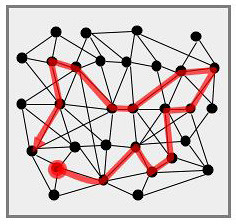

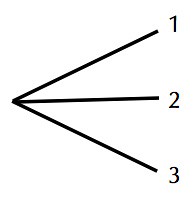
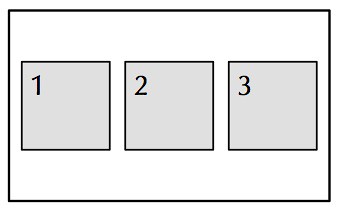

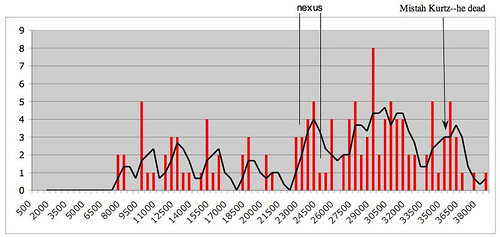
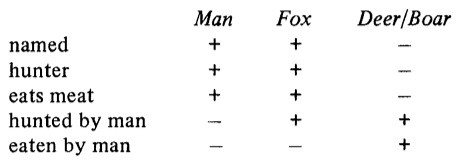

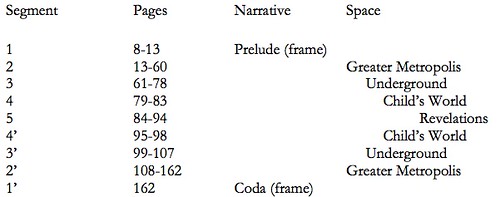
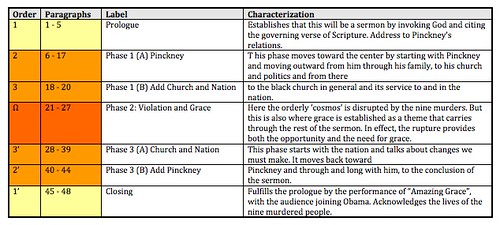
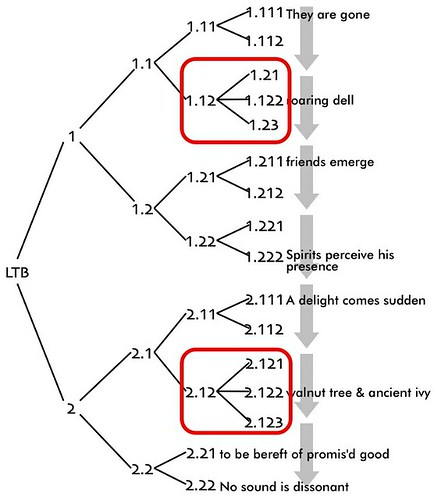
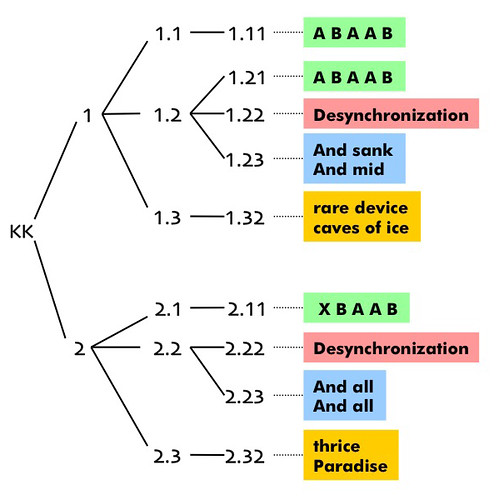

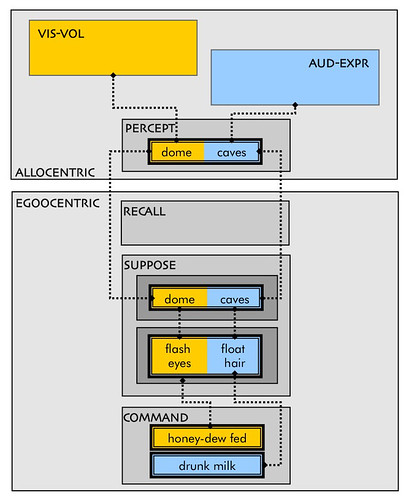


No comments:
Post a Comment